
Rainbow Days
A Guide and Tools for Rainbow Day Events
Rainbow Days are a great way to acclimate students to the salad bar in your cafeteria. It also introduces the concept of eating a plate full of colorful fruits and vegetables.

Rainbow Days
A Guide and Tools for Rainbow Day Events
Rainbow Days are a great way to acclimate students to the salad bar in your cafeteria. It also introduces the concept of eating a plate full of colorful fruits and vegetables.
What are Rainbow Days?
A Rainbow Day is a lunchroom education event that encourages students to eat fresh fruits and veggies - especially items they haven’t tried before. On Rainbow Day, students are encouraged to use produce from the salad bar to create a “rainbow” of at least three colors on their tray. Once they have finished eating their creations, they receive a sticker or other small reward.
We recommend obtaining financial sponsorship so that a free salad can be offered to every student. This is a foundation exercise that will produce long-term impact. Possible sponsors could include local businesses and existing vendors, or you could even pursue a grant for the event.
Key Benefits
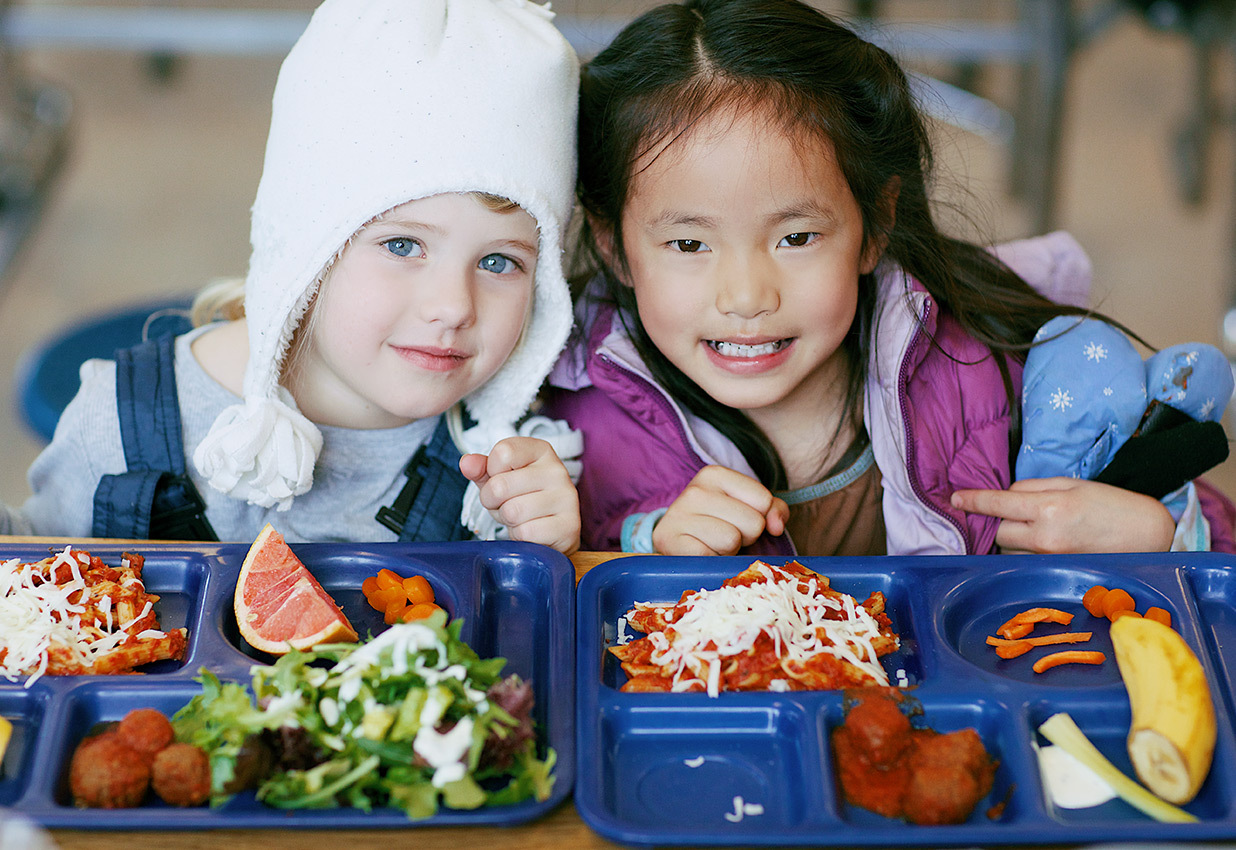
Nutrition Education
Introduces the concept of “eating the rainbow.” The simple practice of selecting different colors of fruits and vegetables for their plates enriches the students’ nutrition in a fun and accessible way. The event also helps students gain the confidence to seek out and try new foods.
Waste Reduction
“Take what you can eat, and eat what you take” is not only a good habit, but will also help reduce cafeteria waste.

Nutrition Education
Introduces the concept of “eating the rainbow.” The simple practice of selecting different colors of fruits and vegetables for their plates enriches the students’ nutrition in a fun and accessible way. The event also helps students gain the confidence to seek out and try new foods.
Waste Reduction
“Take what you can eat, and eat what you take” is not only a good habit, but will also help reduce cafeteria waste.
Etiquette
Teaches students how to use a salad bar, including utensils and management of the tray and serving boat or plate, and raises awareness of the possibility of spills and cross-contamination.
Participation
When marketed in advance, a Rainbow Day event will increase meal participation.


Etiquette
Teaches students how to use a salad bar, including utensils and management of the tray and serving boat or plate, and raises awareness of the possibility of spills and cross-contamination.
Participation
When marketed in advance, a Rainbow Day event will increase meal participation.
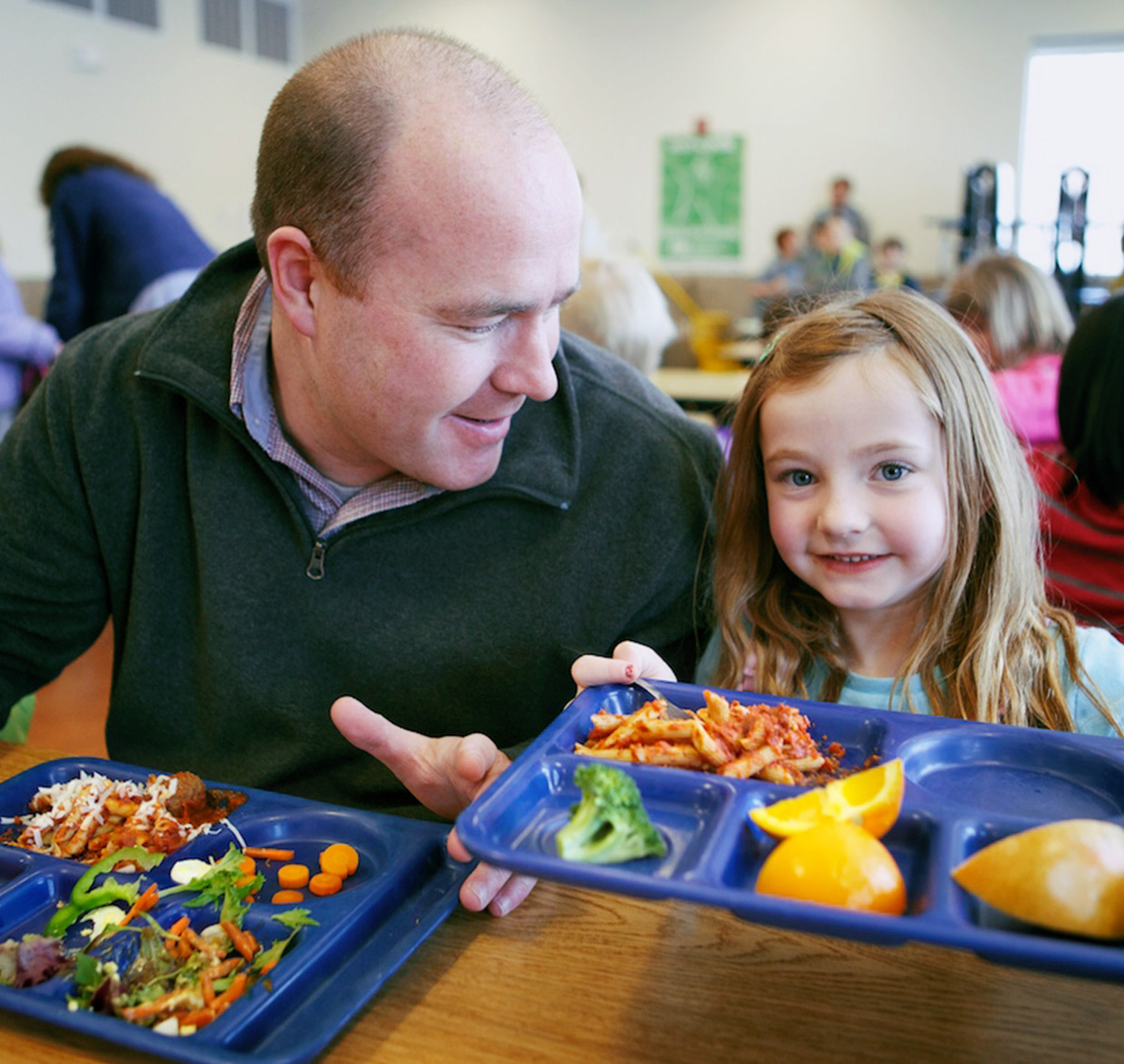
School & Parent Engagement
This activity is designed to bring food services, school administrators, teachers, and parents together in the dining room to participate in an activity that not only has a direct impact on children’s health, but also showcases food services.
Teacher Engagement
A Rainbow Day can be an opportunity for a food service-focused event to link with classroom education. We’ve seen all kinds of great partnerships, including musical compositions created or performed to accompany the event, language arts projects like rainbow poetry, classes of students dressed in rainbow colors, and costumes and artwork connecting fruits and vegetables to the rainbow theme.

School & Parent Engagement
This activity is designed to bring food services, school administrators, teachers, and parents together in the dining room to participate in an activity that not only has a direct impact on children’s health, but also showcases food services.
Teacher Engagement
A Rainbow Day can be an opportunity for a food service-focused event to link with classroom education. We’ve seen all kinds of great partnerships, including musical compositions created or performed to accompany the event, language arts projects like rainbow poetry, classes of students dressed in rainbow colors, and costumes and artwork connecting fruits and vegetables to the rainbow theme.
Administrative & Parent Volunteer Engagement
Food service staff members may be the unsung heroes of your school. A Rainbow Day gives administrators and parent volunteers a chance to collaborate with food services staff. It also involves school administrators in an educational activity in the cafeteria, a location rarely identified as a learning environment.
Community Sponsorship
This activity creates the opportunity for community sponsorship, which will allow the entire student population to participate, whether in the reimbursable meal program or bringing lunch from home. Sponsorship can cover the additional costs of providing a free side salad to every child. Making the event inclusive increases the potential long-term impact by encouraging future reimbursable meal participation from children who routinely pack a lunch from home.
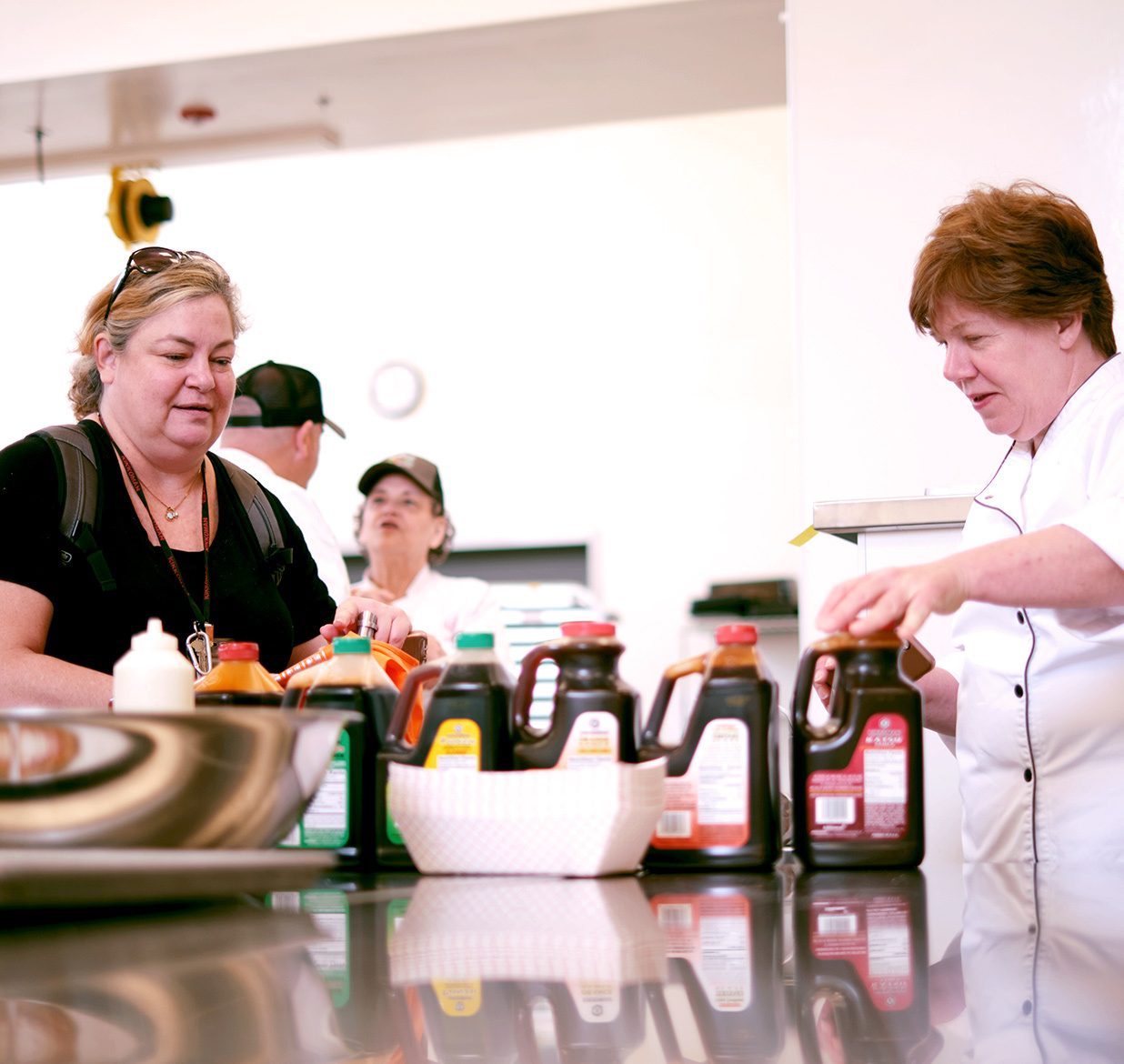

Administrative & Parent Volunteer Engagement
Food service staff members may be the unsung heroes of your school. A Rainbow Day gives administrators and parent volunteers a chance to collaborate with food services staff. It also involves school administrators in an educational activity in the cafeteria, a location rarely identified as a learning environment.
Community Sponsorship
This activity creates the opportunity for community sponsorship, which will allow the entire student population to participate, whether in the reimbursable meal program or bringing lunch from home. Sponsorship can cover the additional costs of providing a free side salad to every child. Making the event inclusive increases the potential long-term impact by encouraging future reimbursable meal participation from children who routinely pack a lunch from home.
Rainbow Day Guide
How to Conduct a Rainbow Day
This is a step-by-step plan to host a Rainbow Day lunchroom education event. The guide provides links to communication templates that can be customized for your own Rainbow Day.
Pre-Planning
Send a Letter to Administration asking for permission to host the Rainbow Day event in the cafeteria during lunch.
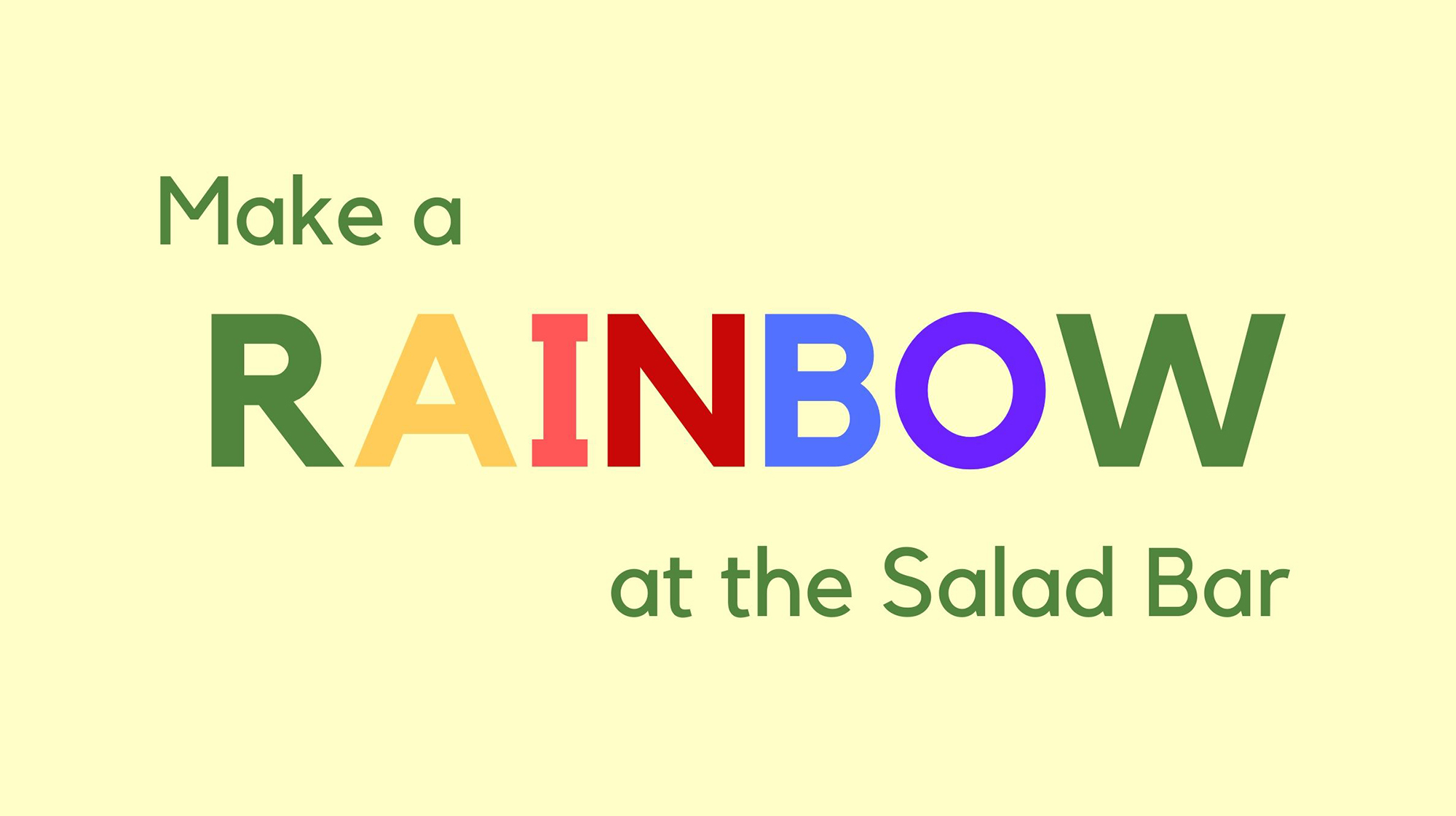

Rainbow Day Guide
How to Conduct a Rainbow Day
This is a step-by-step plan to host a Rainbow Day lunchroom education event. The guide provides links to communication templates that can be customized for your own Rainbow Day.
Pre-Planning
Send a Letter to Administration asking for permission to host the Rainbow Day event in the cafeteria during lunch.
Communication
Send a Rainbow Days Event Flyer to the PTO/PTA to distribute to parents. Also send flyers to administration to hang up around the school. Ask administration to remind students and teachers about the event during morning announcements.
Encourage teachers to create lesson plans to coordinate with the event. This will build anticipation and maximize the results. Lessons can be created in any number of areas, including science, language arts, music, and visual arts.
Contact your school or district to find out about their in-school volunteer policies for both parents and outside volunteers.
Invite PTO/PTA to participate with a Parent Volunteer Outreach Letter. If there is not a strong parent presence available, you can invite community members or college volunteers.
NOTE: It’s helpful to send your volunteer guide along with the letter so that parents know what will be expected of them during the event. Here is a Sample Volunteer Guide.
Inform all onsite kitchen staff about their responsibilities leading up to and day of the event.
Prior to Rainbow Day
If your school has a garden, take your event one step further by featuring school-grown produce. Coordinate with garden teachers or parents to make sure produce will be available for Rainbow Day. Kids are more likely to participate when they’ve grown the food themselves. Don’t forget that all produce from the garden should be delivered to and prepped by the food service team.
Decide colors/types of foods to offer
Having fruits and vegetables in all the colors of the rainbow is the whole point of Rainbow Day. Color selections may be dictated by the season, but the idea is to represent all the colors of the rainbow. If possible, offer more than one selection in a color category, particularly if there are several popular foods of one particular color. Be sure to consider all the possibilities—for example, there are both fruits and vegetables that are purple. Talk to your produce vendor about the event that you’re planning. They may offer to discount some selections and join in the fun. Use our Rainbow Days Ingredients List (with Spanish translations) to help with your planning.
Plan production volume
Rainbow Days definitely increase salad bar consumption. When estimating production volume, consider that every child may take and consume a cup or more of combined prepared salad bar ingredients. To determine adequate volume for ordering and preparation, review your past salad bar production records and the number of students served. Adjust your expectations for ordering and preparation with the assumption that every child may be eating from the salad bar. Include the additional produce in your food orders as necessary, whether you’re ordering directly from the vendor or from the production kitchen.
Order extra supplies
Supplies to consider for your event include paper serving boats (aka trays) or plates, forks, and your choice of participation prizes. If your food service team has aprons and hats, set some aside for volunteers to wear. You should expect that 100% of your students will participate, especially if it’s your school’s first Rainbow Day.
Print Stickers
An easy way to reward students for participating in the event is to give them an I Made a Rainbow Sticker. Online printing services are budget-friendly and usually have a quick turnaround time.
Buy Bracelet Rewards
If you plan on hosting more than one Rainbow Day, collectible bracelets are a great tool to get kids excited about upcoming events. Order bracelets in multiple colors. On the day of the event, have each child choose one color bracelet as a reward for participating. When they participate in the next event, they can choose a bracelet in a different color. Kids love collecting the bracelets and trading with each other. This will generate continuous enthusiasm for recurring Rainbow Day events.
Organize a contest
Designing a contest around the event will generate even more encouragement for students to participate in Rainbow Day. Here are some ideas: 1) Crown a Salad Bar King and Queen. Recognize the students who made and ate the day’s most colorful salads. 2) Make a checklist of all the different fruits and vegetables offered on Rainbow Day. The class that checks off the most items wins a smoothie party. 3) For a district-level contest, find a sponsor and give PTA cash prizes to the school with the best Rainbow Day pictures.
Day of Management
Welcome all of the volunteers and show them around the kitchen. Introduce volunteers to staff and explain general kitchen ground rules. Remind all volunteers about sanitation, allergens, and appropriate behavior found in the volunteer guide. Designate a volunteer/intern to take pictures of the event. Make sure they follow your district’s protocol for this.
Fresh produce tastings can be prepped just before lunch. Leave one vegetable or fruit whole to show the kids.
Assign all of your volunteers a station. There should be at least three volunteers for each meal period to fulfill the following roles: Salad Bar Volunteer, Etiquette Volunteer, and Roaming Volunteer(s). See below for more information about each volunteer type.
Go over a list of helpful phrases that volunteers can use to encourage reluctant students—or those who are unfamiliar with the salad bar—to try new foods. Examples include: 1) “You’re so close! You need just one more color!” 2) “Remember you can always come back for seconds, make sure you can eat everything that you take.” 3) “Have you ever tried ____? It tastes a lot like ___. I think you will like it.” 4) “This is about trying new things so be adventurous!” “5) Be brave! All it takes to try something new is one bite.”
Make an announcement at the beginning of each grade’s lunch period reminding all the kids that it’s Rainbow Day.
Communicate to students that they must select and eat a minimum of three different colors of the “rainbow,” aka the colorful variety of fruits and vegetables offered at the salad bar. We recommend avoiding “starchy white” vegetables like potatoes on Rainbow Day to avoid confusion about what constitutes a rainbow color. While consumption of meats, cheese, and grains is encouraged, these foods are not the focus of Rainbow Day, and do not count toward the three-color rule.
If a student eats every color they choose from the salad bar, reward them with an I Made a Rainbow Sticker or bracelet. We recommend rewarding only the students who eat their whole salad. This creates accountability, teaches portion control, limits waste, and increases fruit and vegetable consumption.
DAY OF MANAGEMENT VOLUNTEER STATIONS
Remember, there should be at least three volunteers for each meal period to fulfill the following roles!
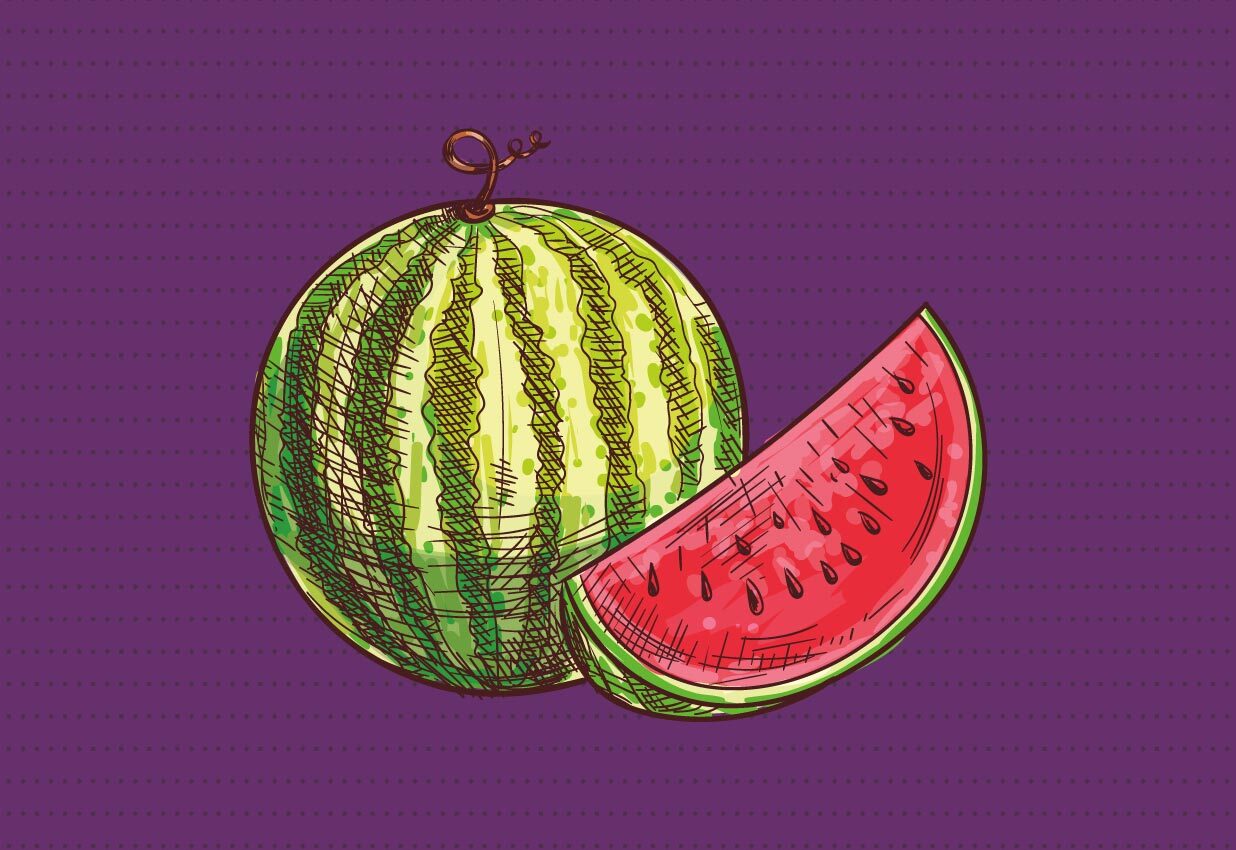
Salad Bar Volunteer
These volunteers are in charge of keeping the salad bar stocked and clean throughout the meal. They’ll need to wash their hands and wear gloves. Be sure to show where they can find the extra prepped produce for when ingredients get low. Since they’ll be cleaning up spills, they’ll also need to know where to get the neutral all-purpose cleaner to clean the tray slide.

Etiquette Volunteer
These volunteers are responsible for helping the kids through the salad bar. They’ll need to remind students not to duck their heads under the sneeze guard when reaching for a product, to use the tongs instead of their hands, and to refrain from eating while going through the salad bar. These volunteers will also remind the kids of the “Rainbow Day Rule” and help them choose at least three different colors for their salad, paying attention to portion control and making sure they can identify the fruits and vegetables they’re choosing.
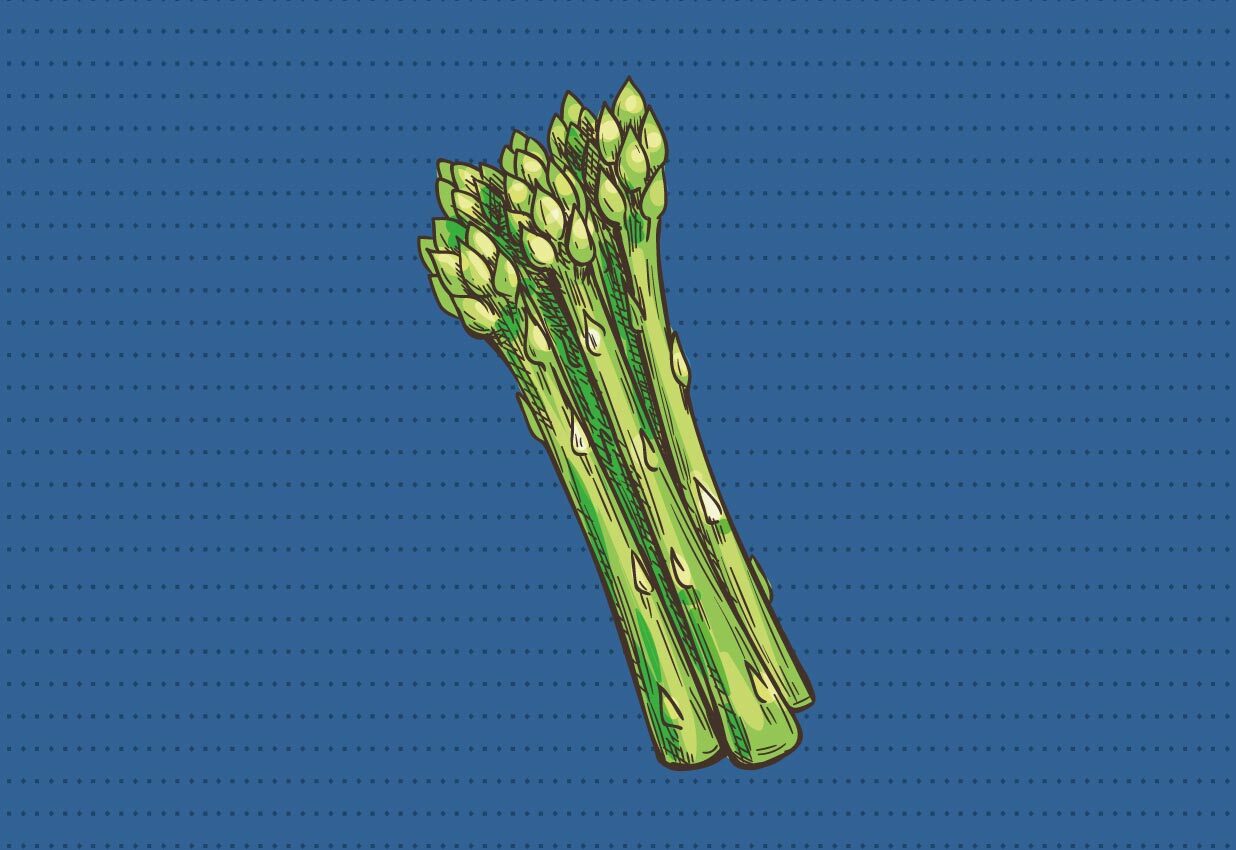
Roaming Volunteer(s)
It’s a good idea to have volunteers walk around the cafeteria encouraging kids to eat what they take and rewarding them with a sticker when they finish. These roaming volunteers should also talk to kids about healthy eating. In addition, they can hand out boats and forks to kids who have brought lunch from home so they can participate in the Rainbow Day. You’ll also want at least one person taking pictures!
Event Follow-Up
- Send a follow-up email or letter for the administration to distribute to school parents. Include pictures and any fun kid quotes or comments from the day. This will inform parents who were unable to attend or didn’t hear about the event, possibly motivating them to participate in the future.
- Thank-you letters are always a good way to get your volunteers coming back for more. Be sure to send your volunteers a quick thank-you to let them know you appreciate their help.


Event Follow-Up
- Send a follow-up email or letter for the administration to distribute to school parents. Include pictures and any fun kid quotes or comments from the day. This will inform parents who were unable to attend or didn’t hear about the event, possibly motivating them to participate in the future.
- Thank-you letters are always a good way to get your volunteers coming back for more. Be sure to send your volunteers a quick thank-you to let them know you appreciate their help.
More Lunchroom Education Activities






